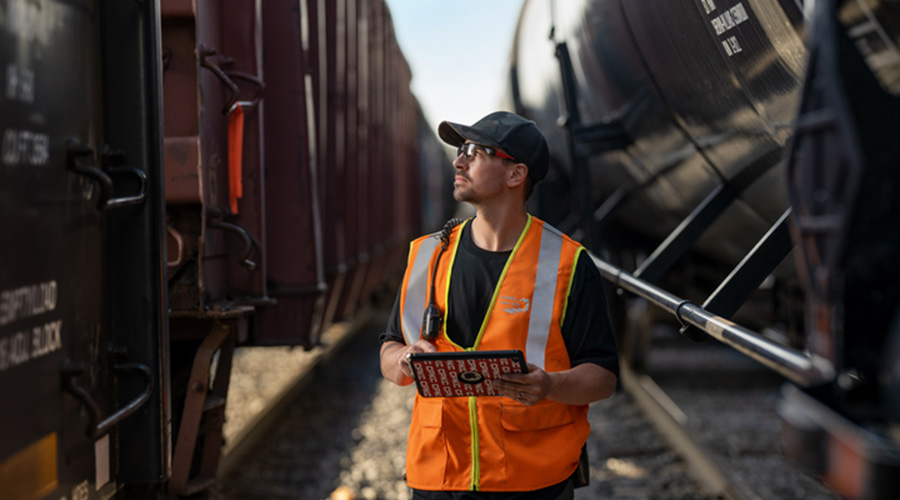Mobile devices help CPKC employees enter the digital era
6/20/2024
By Jeff Stagl, Managing Editor
For many decades, conductors at Canadian Pacific Kansas City and its predecessors relied on paperwork, operating practice/safety books, timetables and other printed items to do their job, especially in smaller yards.
Even as recently as five years ago, about three-quarters of the Class I’s conductors assembled trains by reading faxed or printed paper documents containing information about rail cars and train consists.
Now, CPKC has provided more than 2,500 iPads to conductors in Canada and a portion of the United States that serve as a digital, real-time database of critical train-assembling information. The railroad plans to deploy additional iPads as part of an ongoing integration.
The mobile devices help keep workers informed and up to date on all pertinent documents.
CPKC teams worked with Apple to deploy the iPads in the field and develop a new mobile platform-enabled solution tailored to the railroad’s needs.
“We created a custom enterprise solution by putting the conductors in the room with our developers to create a vision for how and where we can use the iPad to increase efficiency, productivity and safety,” said Caryna Pinheiro, CPKC’s assistant vice president-applications and digital services and assistant chief information officer, in an online post.
A conductor can use an iPad to identify the equipment in a yard or customer facility and to optimize work orders. In the past, a trainmaster or yardmaster would tell crew members what cars needed to be moved where, which potentially could cause delays while workers waited for verbal instructions.
 A conductor can use an iPad to determine what equipment is in a yard or customer facility and to optimize work orders. Canadian Pacific Kansas City
A conductor can use an iPad to determine what equipment is in a yard or customer facility and to optimize work orders. Canadian Pacific Kansas City"I strongly believe that a digital interface, such as the iPads, is the way to go in railroading,” said Brandon Kaufman, a CPKC road foreman. “With the iPads, our conductors have access to everything related to their train, their territories and their work in general.”
Conductors so far have provided a lot of positive feedback on the iPads, Pinheiro said in an email.
“Our workers particularly like that the iPads are lighter and easier to use compared to rugged laptops, and provide more efficient access to technical documents and bulletins,” she said.
The arrival of digitalization is exciting for railroading both now and in the future, Steve Channa, a CPKC conductor, believes.
“My iPad has provided me more efficient access to my rule books and train documents,” he said in an online post.
Over time, additional applications will be available on the iPads to help make train crews’ jobs more efficient.
 Over time, additional applications will be available on devices to help make train crews’ jobs more efficient. Canadian Pacific Kansas City
Over time, additional applications will be available on devices to help make train crews’ jobs more efficient. Canadian Pacific Kansas CityAs workers grow more accustomed to using the devices, the railroad’s people, processes and technology will continue to meld together, CPKC leaders say.
“This gives thousands of our railroaders with boots on the ground the latest technology and tools they need to do their jobs the best they can,” said Pam Arpin, CPKC’s senior VP and chief information officer, in a post.
CPKC also has deployed iPads to support locomotive maintenance processes, and iPhones to support mechanical inspections and auto compound inventory. Mobile devices are used by workers in a number of other departments, including mechanical and engineering employees and commercial team members in auto compounds, Pinheiro said.
“We continue to work with our business units to leverage our mobile strategy to enhance our inventory visibility and optimize our assets,” she said.


